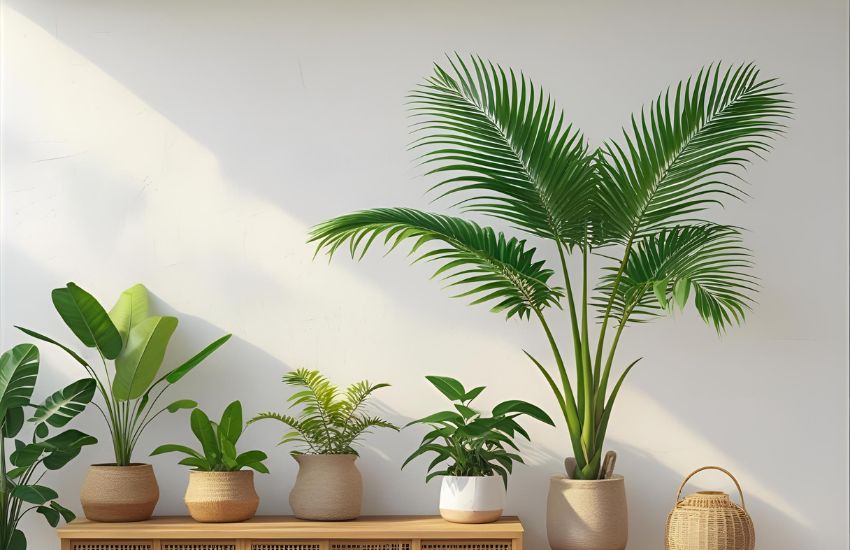Looking to add a lush, calming presence to your indoor space without overwhelming your design? The areca palm plant, also known as dypsis lutescens or butterfly palm, offers a perfect balance of beauty and functionality. Its graceful fronds, vibrant yellow-green tones, and low-maintenance nature make it one of the most popular indoor choices among modern plant lovers. Native to Madagascar, this tropical species thrives indoors when given the right conditions—making your home feel alive, fresh, and harmoniously styled.
Areca Palm Plant Guide: Bring Life and Calm Into Your Home With Modern Style
The Areca Palm adds a refreshing burst of green to any interior, offering both beauty and air-purifying benefits. Thriving in full to partial sun and moist but not soggy soil, it’s perfect for spring to early fall growth. Repot every 2–3 years and watch for leaf tip burn as a sign of overwatering.
In this guide, you’ll explore expert-backed care instructions, effective pest prevention, repotting tips, and design ideas to elevate your home. Whether you’re new to plant care or refining your space, this is your trusted source for cultivating calm with the areca palm.
Essential Areca Palm Plant Care Instructions for a Thriving Indoor Houseplant

Caring for an areca palm, also known as Chrysalidocarpus lutescens, is a rewarding experience when done right. Often called golden butterfly palm, yellow palm, or bamboo palm, this tropical houseplant brings both elegance and serenity to your space. To help your indoor areca palm thrive, it’s essential to follow consistent and informed care instructions.
Choose the Right Light and Location
Areca palms prefer bright, indirect light. While they can tolerate lower light levels, placing your indoor areca near a filtered light source avoids issues like leggy growth or yellow or brown leaves. Avoid direct sunlight, which can scorch the delicate fronds.
Watering and Soil Needs
Maintaining moist soil without overwatering is key. Allow the top inch of the soil to dry before watering again. Use a well-draining potting mix in a container with proper drainage holes to prevent a soggy root ball, which can lead to rot. This house plant prefers slightly acidic soil for best growth.
Feeding and Fertilizing
To encourage lush, vibrant foliage and support healthy growth, fertilize your plant monthly during spring and summer using a balanced, water-soluble formula. Avoid overfeeding, as it can damage roots and discolor leaves. A second light fertilize during the dormant season may be skipped entirely.
Pests and Plant Health
Regularly check for pest problems such as spider mites or mealybugs, especially if your air is dry. These tiny intruders can harm the yellow butterfly palm, so wiping the leaves with a damp cloth or using a natural insecticidal spray can help control outbreaks. Signs of stress like yellow or brown tips often indicate watering issues or poor air circulation.
Pruning and Growth Tips
Remove dead fronds to keep your golden feather palm looking fresh. Though it rarely produces yellow flowers indoors, this houseplant can grow quite full and tall, making it ideal for use as a hedge or privacy screen in larger rooms.
Repotting and Long-Term Care
As your plant matures, repot it every 2–3 years to provide fresh soil and room for the expanding root ball. Choose a slightly larger pot and refresh the potting mix to maintain proper nutrients and drainage.
How to Pot, Repot, and Protect Your Areca Palm From Pests

Take a deep breath and approach the care of your areca palm with confidence—this tropical plant is easy to care for when its foundational needs are met. Whether you’re starting with a young plant or refreshing an older one, understanding how to pot, repot, and protect your palm from pests is essential for healthy growth.
Begin by selecting a container with proper drainage and filling it with well-drained potting soil or a peat-based potting mix. Areca palms prefer moist conditions, but the key is balance—moist but well-drained soil helps prevent root rot while supporting strong root development. Only water when the soil is dry about an inch down, and adjust your waterings seasonally. During active growth periods—from spring to early fall—keep the soil moist without letting it become soggy.
To ensure the plant receives proper nutrients, use a balanced fertilizer monthly or choose a slow-release fertilizer for long-term feeding. You may also apply palm fertilizers that contain magnesium and iron, as palm fertilizers that contain specific micronutrients promote greener foliage and fewer deficiencies.
If your plant begins outgrowing its container, repot it into a slightly larger pot using fresh well-draining soil. Be gentle with the root system and avoid damaging the stems or leaflet bases.
Pest protection is another vital aspect of care. Indoors, areca palms are vulnerable to spider mites and whitefly, especially in dry environments. Keep humidity levels steady and inspect the undersides of leaves regularly. If infestations occur, wipe down the foliage and apply an insecticidal soap or neem oil to control pests without harming the plant.
While areca palms thrive indoors, they can also be grown outdoors in warmer climates. Just remember to avoid placing them in harsh direct sun, which may scorch the leaves. If conditions are right, you may even notice panicles of yellow flowers or yellow flowers in summer, adding extra charm to the plant’s graceful silhouette.
Conclusion
Caring for an areca palm is a rewarding way to invite tranquility and natural elegance into your home. As a popular indoor palm, it requires thoughtful care—from choosing moist but not soggy soil to using fertilizers that contain specific nutrients to support strong roots and vibrant foliage. You’ll enjoy quicker growth in spring and lush growth in spring and summer when your care is consistent and well-balanced.
Although the plant may produce up to 40–60 pairs of leaflets, it doesn’t need much pruning beyond occasional removal of dried fronds. Always check the soil and remove any build-up that might affect drainage. Repot your palm every 2–3 years to refresh the soil and accommodate new growth. Place your plant in full to partial sun, and avoid overwatering to prevent leaf tip burn.
From spring to early fall, keep a steady care routine and let your palm flourish into one of the most beautiful plants in your indoor garden.
Frequently Asked Questions (Areca Palm Plant Guide: Bring Life and Calm Into Your Home With Modern Style)
Why is the Areca Palm perfect for modern home décor?
The Areca Palm’s sleek, feathery fronds and elegant appearance make it ideal for modern interiors. It adds a touch of greenery that complements minimalist, contemporary, or bohemian spaces while creating a fresh and calming atmosphere.
How do I care for an Areca Palm indoors?
Place the plant in bright, indirect light, water it when the top inch of soil feels dry, and keep it in a humid environment. Regularly wipe the leaves to remove dust and fertilize monthly during the growing season for optimal growth.
Is the Areca Palm safe for pets and kids?
Yes, the Areca Palm is non-toxic and safe for both pets and children, making it an excellent choice for family-friendly homes while still adding beauty and tranquility to your living space.
What benefits does the Areca Palm bring to my home?
Besides enhancing your décor, the Areca Palm improves indoor air quality, reduces stress, and adds a natural sense of calm. Its lush greenery creates a refreshing vibe, making it perfect for living rooms, offices, or bedrooms.
